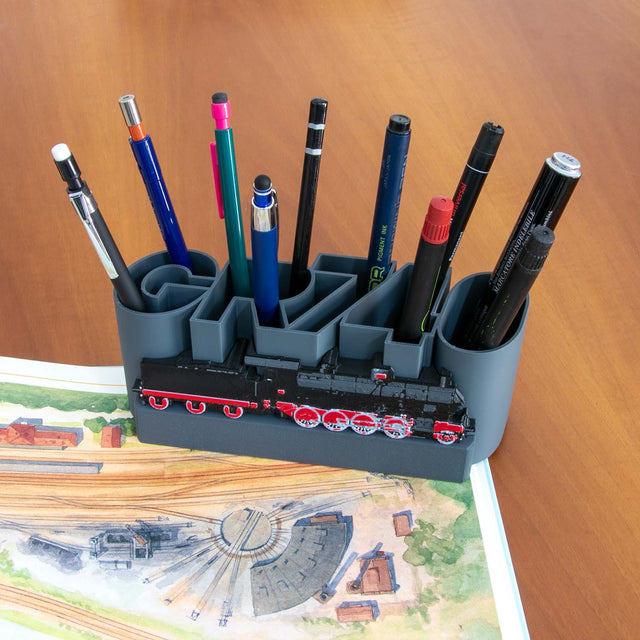
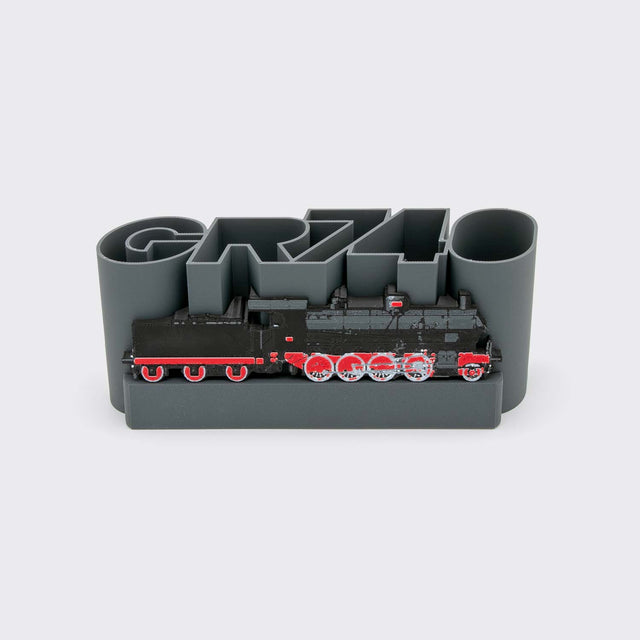
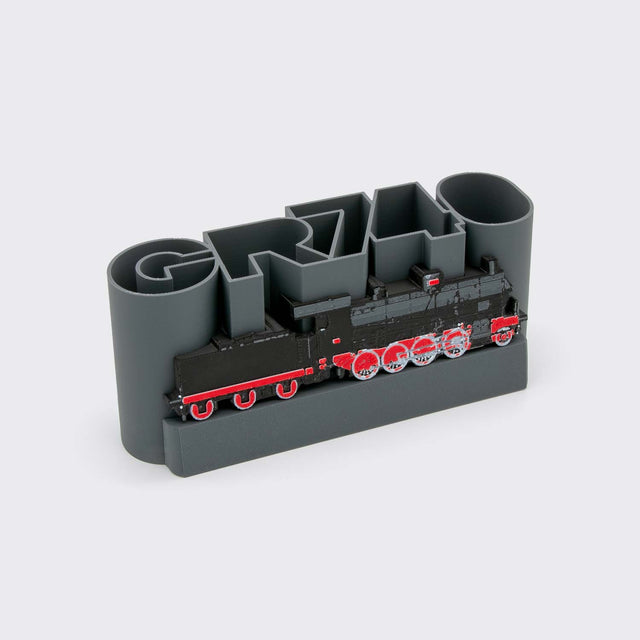
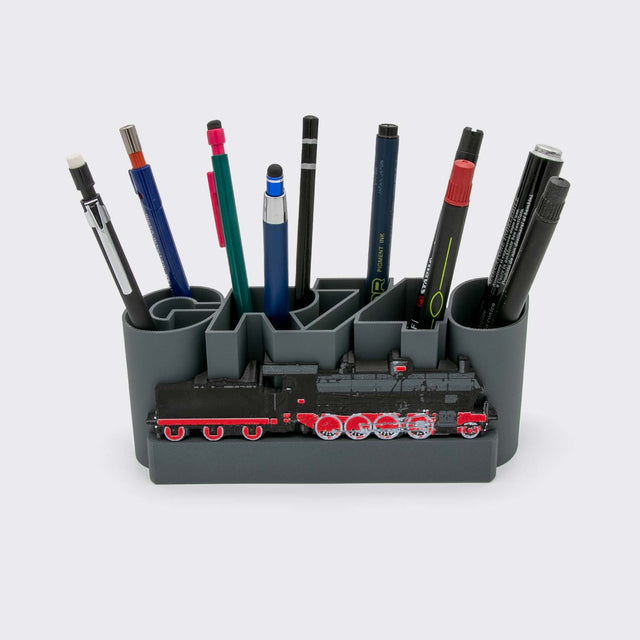
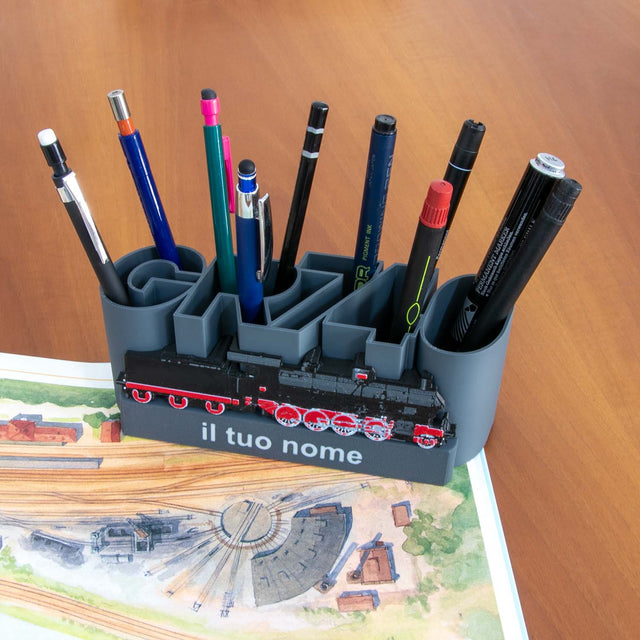
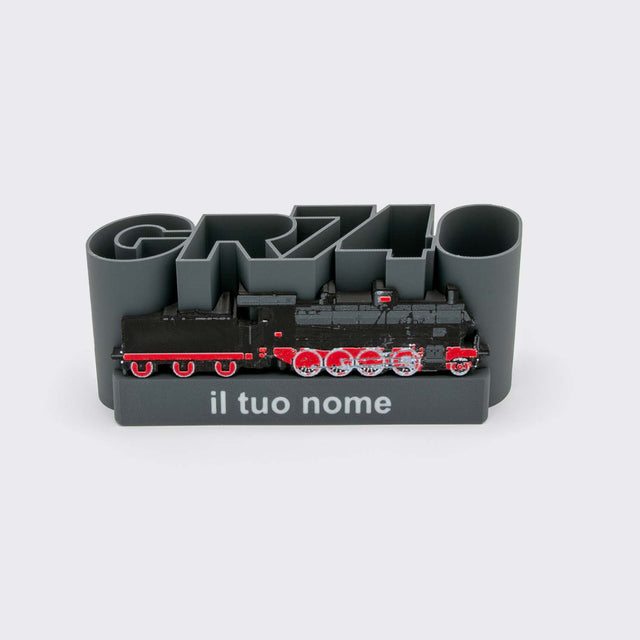
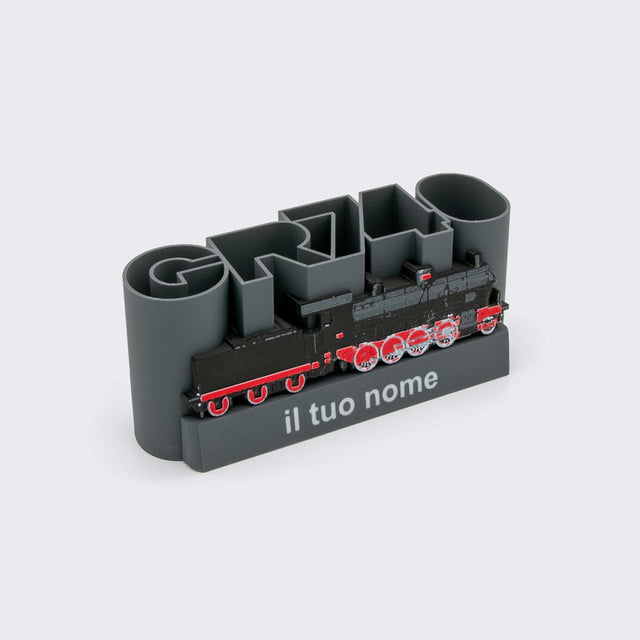
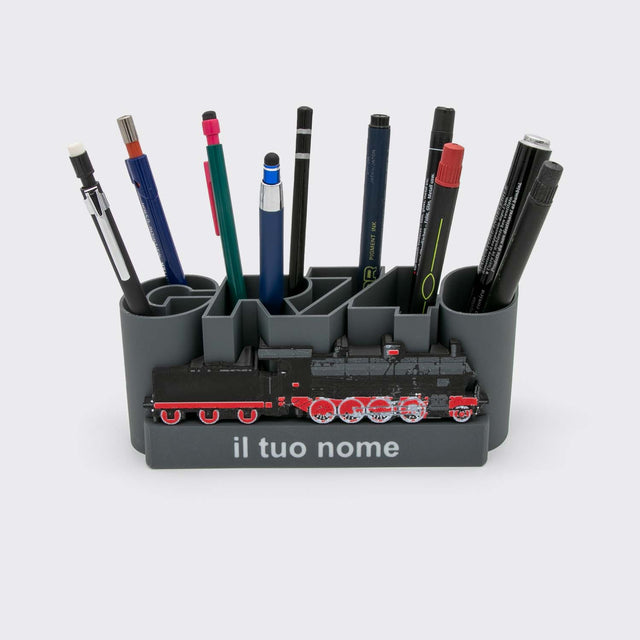
Pen holder with GR740 steam locomotive
The GR740 writing serves as a container for pens, markers, pencils, brushes and other commonly used objects found on our work or study desks.
The stylized shape of the famous steam locomotive of the 740 group dating back to the first decades of the 1900s is beautifully displayed next to the writing.
3D printed with 4-color bioPLA material, it is supplied already assembled.
The locomotive adopts a layered print to reveal the 4 colors adopted with their relative shades.
Available in two versions:
- Standard : neutral pedestal, without writing, with textured finish.
- Personalised : pedestal with writing chosen by the customer positioned under the wheels of the locomotive. Choose the "Custom" variant and write the text in the field that appears, independently.
For further customizations with logo or graphics you can contact me by clicking here
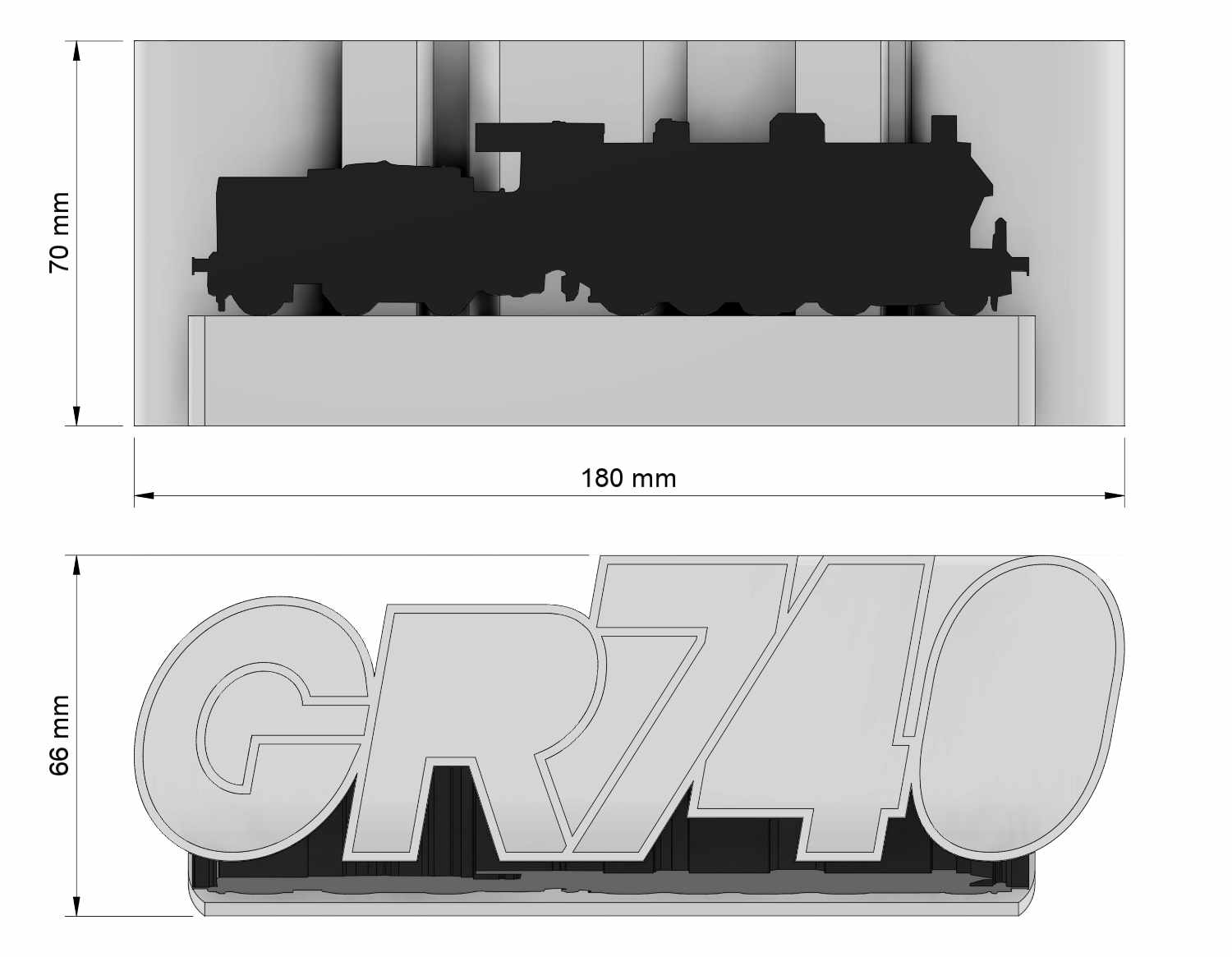
GR740 steam locomotive
Source: Wikipedia - Image: By Raboe001 - selbst photographies DigiCam C2100UZ, CC BY-SA 2.5, https://commons.wikimedia.org/w/index.php?curid=2791461
The 740 group project, developed by the Adriatic Network a few years before the nationalization of the railways in 1905, was born with the aim of improving the already good service that the 730 group locomotives carried out on the important lines, the Porrettana, the Florence-Rome and in general the central-northern lines. The project was immediately taken up and carried forward by the newly established Ferrovie dello Stato. 470 examples were built between 1911 and 1923.
The results of the project were excellent and this is demonstrated by the high number of examples built and its diffusion throughout the national territory.
To obtain the desired result, while maintaining the general architecture of the machine and its general characteristics, the superheated and simple expansion steam cylinder feeding system was adopted. The changes made to the project allowed an increase in power of 80 HP, and in traction force, at a speed of 45 km/h, by almost 500 kg more. The axial weight was kept within 14 tonnes per axle, a value that allowed its use even on lines in poor armament conditions. The operating savings achieved also paid off significantly.
The locomotives were born equipped with a Westinghouse automatic compressed air brake and a steam intake for heating the passenger cars. As regards the tender, the three-axle one was adopted for the first units up to 740.294 and for 150 subsequent locomotives the unified one with 22 cubic meter bogies.
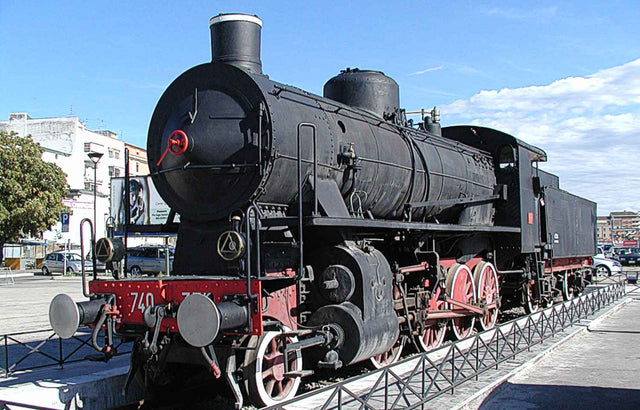
Allegati
Payments
We use safe, secure and traceable payments with VISA, MASTERCARD and PayPal credit cards
We also accept bank transfer
Shipping
Free for orders from €89.00 in Italy and Europe
Italy €7.90 with express courier
Europe from €9.90 with express courier
Customization
Follow this icon.
We make you a customized product.
Customized sizes suitable for every need
contact info
OBJETICA
by Nannini Guido
Via Bonacini, 191/a
41121 Modena (MO)
Italy
VAT number 04085790360
mail@objetica.com
+39.059.4724524
afternoon only, 3pm - 6pm
